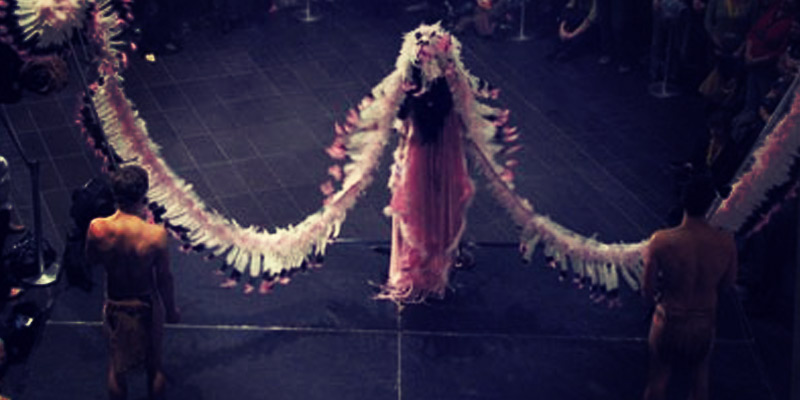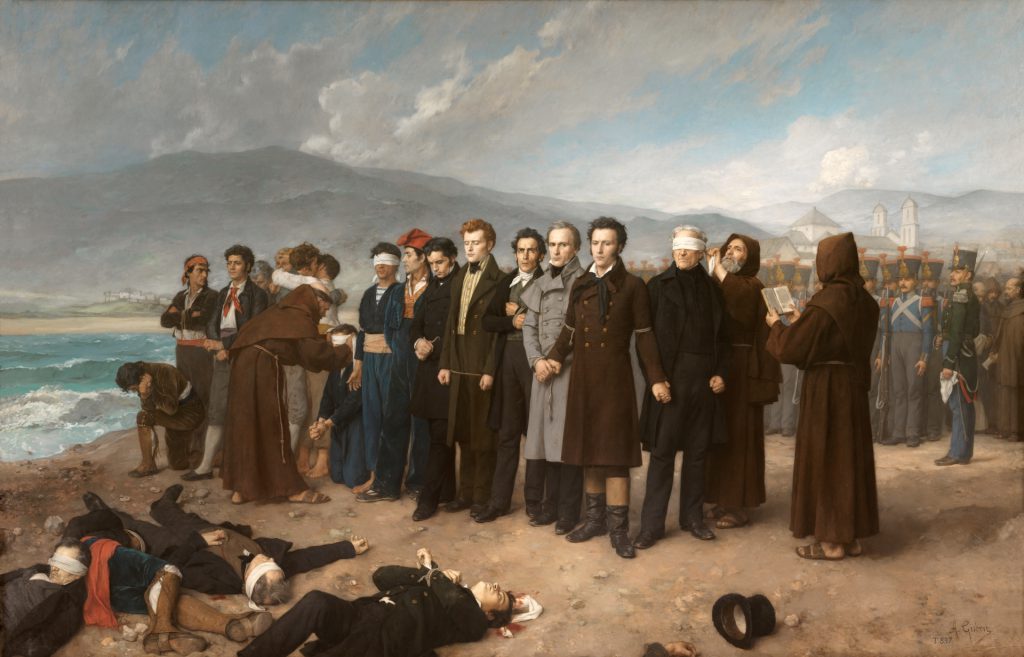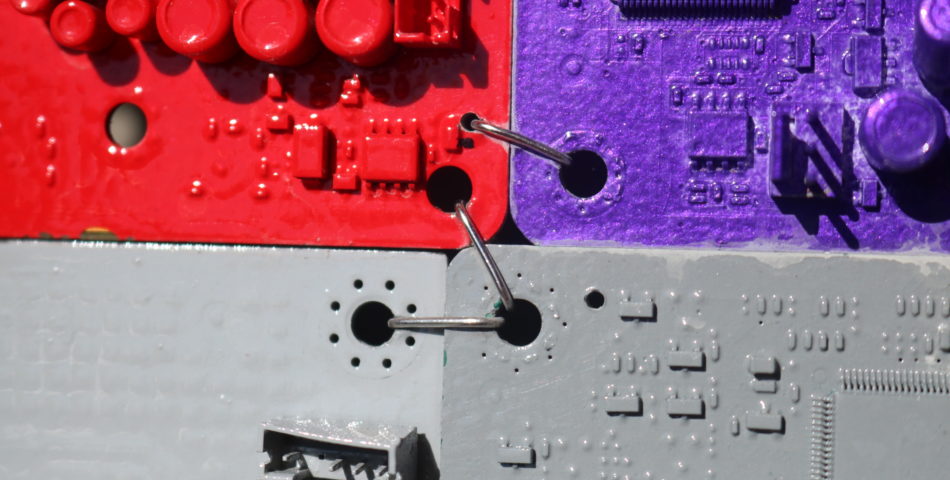Artist Kent Monkman engages his alter-ego Miss Chief Eagle Testickle to disrupt preconceived notions of history and Indigenous people
Can you please tell us a little about yourself?
I am a Canadian artist of Cree ancestry and I seek to reinterpret North American landscapes in my work. My gender-fluid alter-ego Miss Chief Eagle Testickle, a time-travelling, shape-shifting, supernatural being, appears in much of my art to upend received notions of history and Indigenous people.
You have recently relocated your studio in Toronto. Can you describe the difference this has made for your work and process?
I was able to double the size of my studio, and this allowed me to hire more staff and develop larger projects. Limitations of space can really cramp your style. It took four years to find the right space, but the shift in creative possibilities was instant.
In reflecting on your art over the last ten years of your career, how would you describe the change?
I have been fortunate to find very talented young artists who are strong collaborators. With their eyes on my work I have been able to grow my practice both in quality and quantity. As an individual one is really constrained by one’s own limits of time and energy. I figured out how to model my painting studio on the classic atelier framework while also harnessing new technologies. Collaboration brings so much to my practice.
When did you know you’d have a career in art?
I’m fortunate that I identified as an artist from the time I was maybe five years old. I was also lucky that my parents nurtured the artist in me. Figuring out how to build and sustain a career as a professional artist has been the challenging part.
What day jobs have you had?
My first and only real job after studying illustration at Sheridan College was as a storyboard artist at Leo Burnett, a top advertising agency. After a couple of years of that, I free-lanced until I could shift the balance to my art practice full time.
What was your first successful creative act?
In grade one, I nailed a portrait of my school principal and got taken to his office to show it to him.
How do you begin your day and what are your habits?
Coffee, gym, smoothie, and then my staff arrive and we get busy.
Which artists do you admire most? OR Which artists are your role models?
I’m a big fan of the old masters: Rubens, Caravaggio, Titian, Goya, Van Dyck, and Delacroix. In terms of contemporary art role models, I would mention the Indigenous artists who have forged new paths for us, on their own terms, in the world of contemporary art, film, and literature, beginning with Norval Morrisseau, Robert Houle, Bill Reid, James Luna, Rebecca Belmore, Lawrence Paul Yuxweluptun, Alanis Obomsawin, Zacharius Kunuk, Tomson Highway, and many others.
Which artists do you like, that would surprise people?
Young artists Rajni Perera, Gwaai Edenshaw, and Shawn Hunt.
Who is your muse?
Miss Chief!

What is your greatest extravagance when creating?
Having 12 assistants.
Which is more important, the process or result? Why?
Both are essential and are intertwined. I keep refining the process which produces better results.
What is your favourite colour? Your least favourite colour?
I love all colours but I find yellow difficult to work with.
How do you procrastinate?
Coffee, gym, smoothie.
What is your favourite work of art?
I don’t have a favourite per se, but I have been talking a lot about a painting at the Prado over the last six years because it really excited me: The Execution of Torrijos and His Companions on the Beach at Malaga, by Antonio Gisbert. I started thinking about the impact of history painting and how I could apply this genre of painting to authorize Indigenous histories into the canon of art history.

Who would you want to create your portrait?
Eugene Delacroix.
What do you do if you need inspiration when you are not making art?
Go to the great museums of the world; spend time in nature, read.
What do you consider your greatest achievement?
I think my exhibition, Shame and Prejudice: A Story of Resilience, because it seemed to touch a nerve with Canadians and communicate a profound message about what it means to be colonised.
What is your greatest fear?
Questionnaires!
What advice do you have for aspiring artists?
Stop chasing trends. Learn how to draw, paint, sculpt, write, and just get good at your practice. Don’t let the idea be the main event.
How did you hear about Partners in Art?
They showed up at my studio in Prince Edward County one day with a chip truck, and I thought, hey, I like these people. Actually, PIA supported one of my performances at the ROM in 2007.
Follow Kent Monkman’s work
www.kentmonkman.com
Instagram @kentmonkman
